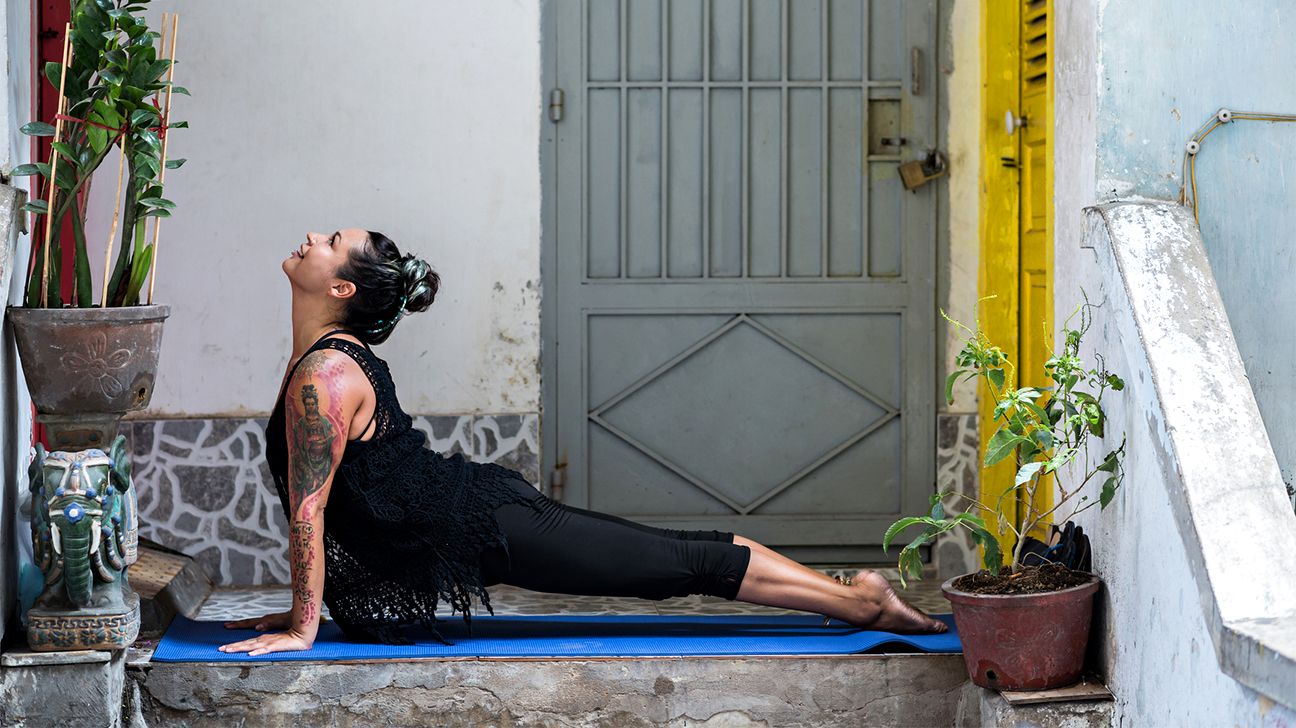Exercising isn’t “one size fits all” — far from it. Cardio, HIIT, low-impact, plyometric, Pilates, resistance, running, weight training… the list goes on and on. Whichever workout you do, stretching should be part of your routine.
Stretching is beneficial for everyone, from the power athlete to the desk worker. It can boost muscle function; relieve stiff, sore muscles; and minimize injury, among other perks.
But with all the different types of stretches out there, how do you know which ones are best for you? Where do you start?
These five core stretches are moves everyone should add to their daily routine, whether you train hard every day or squeeze in a quick 7-minute ab workout before dinner. Think of these stretches as a minimalist routine to help your body move better in your day-to-day life.
“I always say that strength comes from mobility,” says Mathew Forzaglia, a New York City-based personal trainer. Whip out this routine each morning or night to help combat stiff and sore muscles. You can use it as the basis of a customized stretching routine, based on your workout and lifestyle habits. Of course, talk to your doctor if you have new or increased pain while doing these stretches. Check out the routine below:
Forzaglia calls the couch stretch a staple for everyone, especially those who sit at a desk most of the day. “It will open up your hip flexors and lower abdomen while focusing on ankle mobility,” he says. “This will also help reduce tightness in the lower back.”
The couch stretch is sort of a floor lunge using the couch to support one leg. To do it, stand facing away from the couch and place one foot on the edge of the couch seat (Get it? “Couch stretch”?). Step the other leg forward as if you’re going into lunge position. Lower your “couch” knee to the floor and make sure your hip stays open. Reach your hand on that same side up to the ceiling. Hold for 1 to 2 minutes. Release and switch sides.
For more hip-opening, back-pain-relieving goodness, put your body into Pigeon, a yoga pose named for the fact that it’ll (sort of) make you look like the bird.
Sit on the floor with your left leg straight out behind you with the toes relaxed and your right knee bent outward. Pull your right heel to your left hip, making sure your left hip doesn’t open up. Slowly bend your torso over your right knee. Rest your hands on your hips or thighs or stretch them out on the mat. Hold and breathe for 1 minute. Slowly switch sides. You can make this stretch a little easier by keeping your torso more upright or make it more advanced by lowering your upper body closer to the floor.
The scorpion stretch not only stretches out your hips but also helps your chest, shoulders, and biceps. “Most people sit and hunch forward, so this will help [them] open up their anterior and stand up taller, reducing upper back pain,” Forzaglia says.
To do this stretch, lie facedown on the ground with your arms straight out from your sides, forming a T shape. Keep your left leg straight. Bend your right knee and lift your right foot up and over to the left. Alternate legs. There are beginner and advanced versions of this stretch, depending on your comfort level.
The scorpion stretch should be done carefully by people with lower back problems. You should also use caution as to how much you allow your spine to rotate during the stretch.
This deep stretch can be a little tricky to master, but it’s definitely worth it if you want to become more agile. “This will help keep our hips mobile in a place that we may not ever get into in everyday movement,” says Forzaglia. Targeting your hamstrings and inner thighs, this stretch is particularly ideal for athletes who need to perform lateral movement, like cutting sides or dodging, in their sport.
Stand with your feet a little wider than shoulder width and your toes facing slightly outward. Shifting your weight to your right leg, slowly bend it so that you end up in a squat with your right leg bent and your left leg extended. Lift up your left foot so only your heel is on the ground. Repeat on the opposite side.
This yoga favorite targets your hip flexors and lower abs, which are often static throughout the day if you work at a desk. It also strengthens your wrists, arms, and shoulders, which can improve your posture. Those who run regularly can benefit from this stretch because it aids in rotational and lateral movement.
To do the stretch, lie facedown on the ground with your legs a few inches apart and your toes stretched out. Place your hands next to your lower ribs and, as you inhale, press your hands into the mat so that your torso is lifted. Press the tops of your feet down to slightly lift your thighs. Draw your heart forward so your neck isn’t hunched over. If you rotate your torso, you can also isolate the right or left side in a deeper stretch. Hold for 1 minute. Slowly lower to the starting position.

